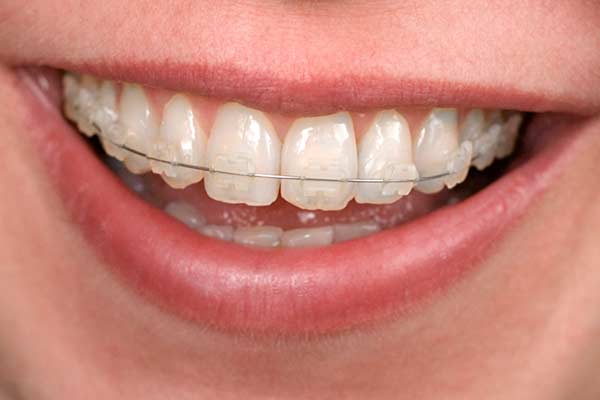Specialist Cumming Braces and Aligners: What to Know Prior To You Visit
Comprehensive Overview to Orthodontics Procedures for Fixing Dental Misalignments
Understanding the ins and outs of each procedure, including their systems, advantages, and potential disadvantages, is vital in making notified choices concerning one's orthodontic treatment. As we navigate with the thorough guide to orthodontic treatments for dealing with dental misalignments, the detailed details of each technique will certainly unfold, dropping light on the course toward a useful and unified oral placement.
Orthodontic Procedures Review

Regular modifications and monitoring are critical components of orthodontic treatment to make sure progress is on track and to make any kind of required adjustments along the method. By undertaking orthodontic treatments, individuals can not just attain a straighter grin yet additionally boost their overall dental health and function.
Conventional Braces: Exactly How They Work
When taking into consideration orthodontic treatments for oral misalignments, traditional braces stick out as a tried and true approach for remedying teeth placing. Conventional dental braces contain brackets, cables, and bands that work together to use constant pressure on the teeth, progressively moving them right into the wanted alignment. The braces are connected to the teeth making use of a special adhesive, and the cables are threaded via the braces. By adjusting the stress of the wires, orthodontists can manage the instructions and force used to each tooth, assisting them right into proper positioning in time.
One secret facet of just how traditional braces work is the procedure of bone makeover. As pressure is related to the teeth via the dental braces, the bone surrounding the teeth is reshaped to support the new tooth positions. This improvement is essential for the long-term stability of the fixed positioning. Clients will require routine modifications at the orthodontist's office to make sure the dental braces remain to use the proper stress for efficient teeth motion.
Invisible Aligners: Pros and Disadvantages
These clear, custom-made trays are essentially invisible when used, making them an enticing choice for individuals seeking an extra visually pleasing orthodontic therapy. Patients can remove the aligners prior to eating or brushing their teeth, lowering the risk of food getting stuck in the home appliance and streamlining the cleaning procedure.

Surgical Orthodontic Options
Surgical treatments in orthodontics present feasible alternatives for addressing complex dental misalignments that may not be effectively solved via standard orthodontic therapies. While conventional braces and unnoticeable aligners can correct several orthodontic concerns, particular cases need surgical intervention to accomplish ideal results. Surgical orthodontic options are usually recommended for severe malocclusions, significant jaw discrepancies, and instances where the underlying bone framework requires adjustment to attain correct placement.
One usual surgical orthodontic procedure is orthognathic surgery, which entails rearranging the jaws to deal with useful problems such as problem speaking or chewing. This surgery is frequently performed in collaboration with an orthodontist that assists align the teeth prior to and after the procedure. Surgical orthodontics may also entail procedures to expose influenced teeth, eliminate excess periodontal Full Article cells, or reshape the jawbone to create a more unified facial account.
Before considering medical orthodontic choices, patients undergo an extensive examination to identify the necessity and potential benefits of such interventions. cumming invisalign. his response While surgical treatment may appear complicated, it can considerably boost both the function and appearances of the smile in situations where traditional orthodontic therapies fall short
Retainers and Post-Treatment Treatment

Failing to conform with post-treatment care instructions can result in regression, where the teeth progressively move back towards their initial settings. Consistent retainer wear, good dental health, and normal dental examinations are crucial for preserving the outcomes accomplished with orthodontic surgery and how to be a dentist making certain the long-lasting security of the fixed oral alignment.
Verdict
In verdict, orthodontic procedures use numerous alternatives for correcting dental misalignments. Surgical orthodontic options are available for much more severe imbalances. Generally, orthodontic procedures can properly enhance oral health and wellness and visual look.
As we browse with the thorough guide to orthodontic treatments for fixing oral imbalances, the elaborate details of each approach will unravel, shedding light on the path towards a useful and harmonious dental placement. - cumming invisalign
One of the most usual orthodontic treatments is the use of dental braces, which are composed of metal brackets and wires that use mild pressure to gradually change teeth into the wanted setting.When thinking about orthodontic therapies for dental misalignments, traditional braces stand out as a time-tested method for correcting teeth placing. Additionally, invisible aligners might not be ideal for complex orthodontic problems that need even more significant teeth movement, as they are generally recommended for mild to modest situations. Retainers are tailor-made orthodontic tools created to hold teeth in their dealt with positions after the completion of orthodontic therapy.